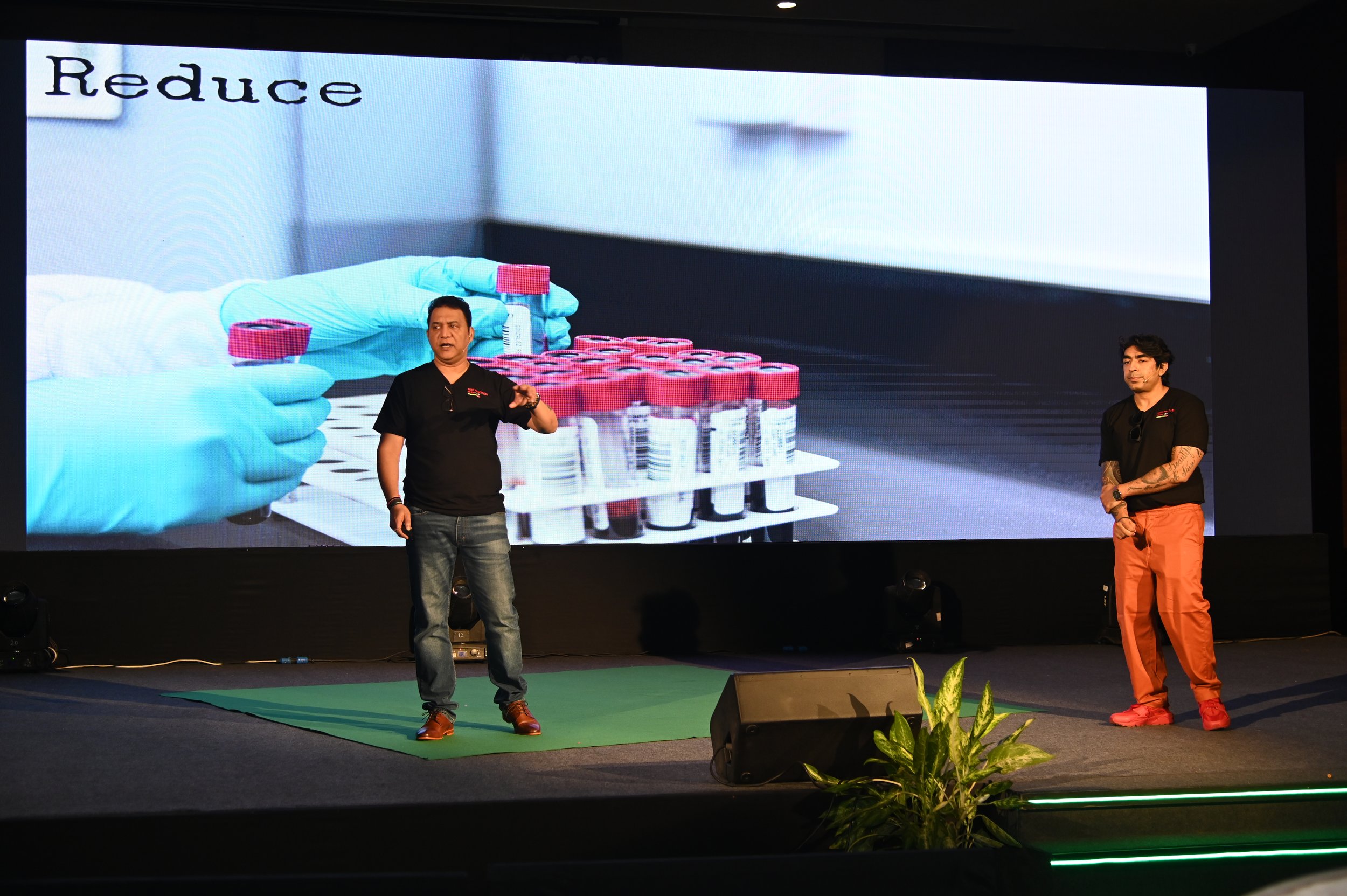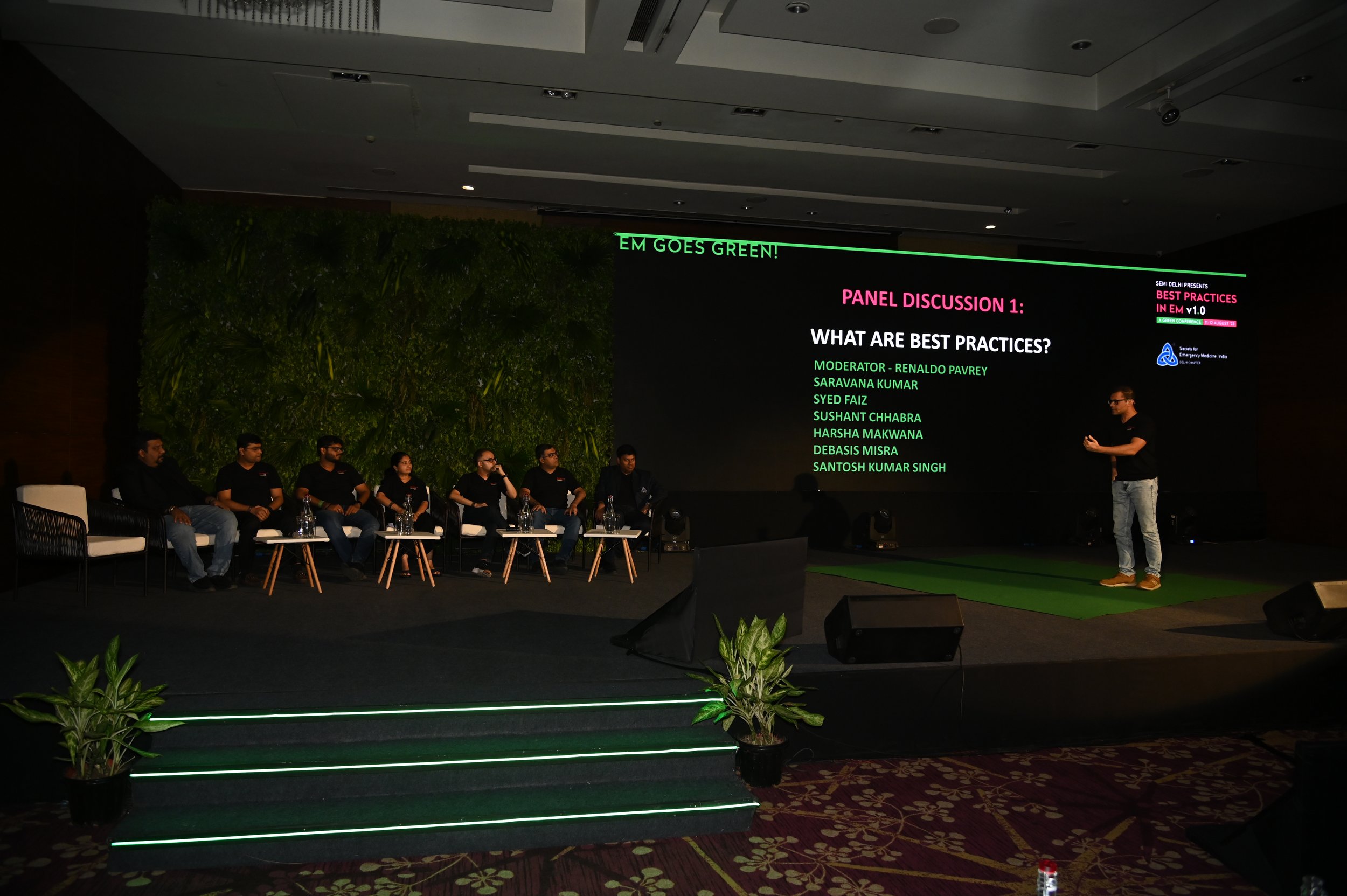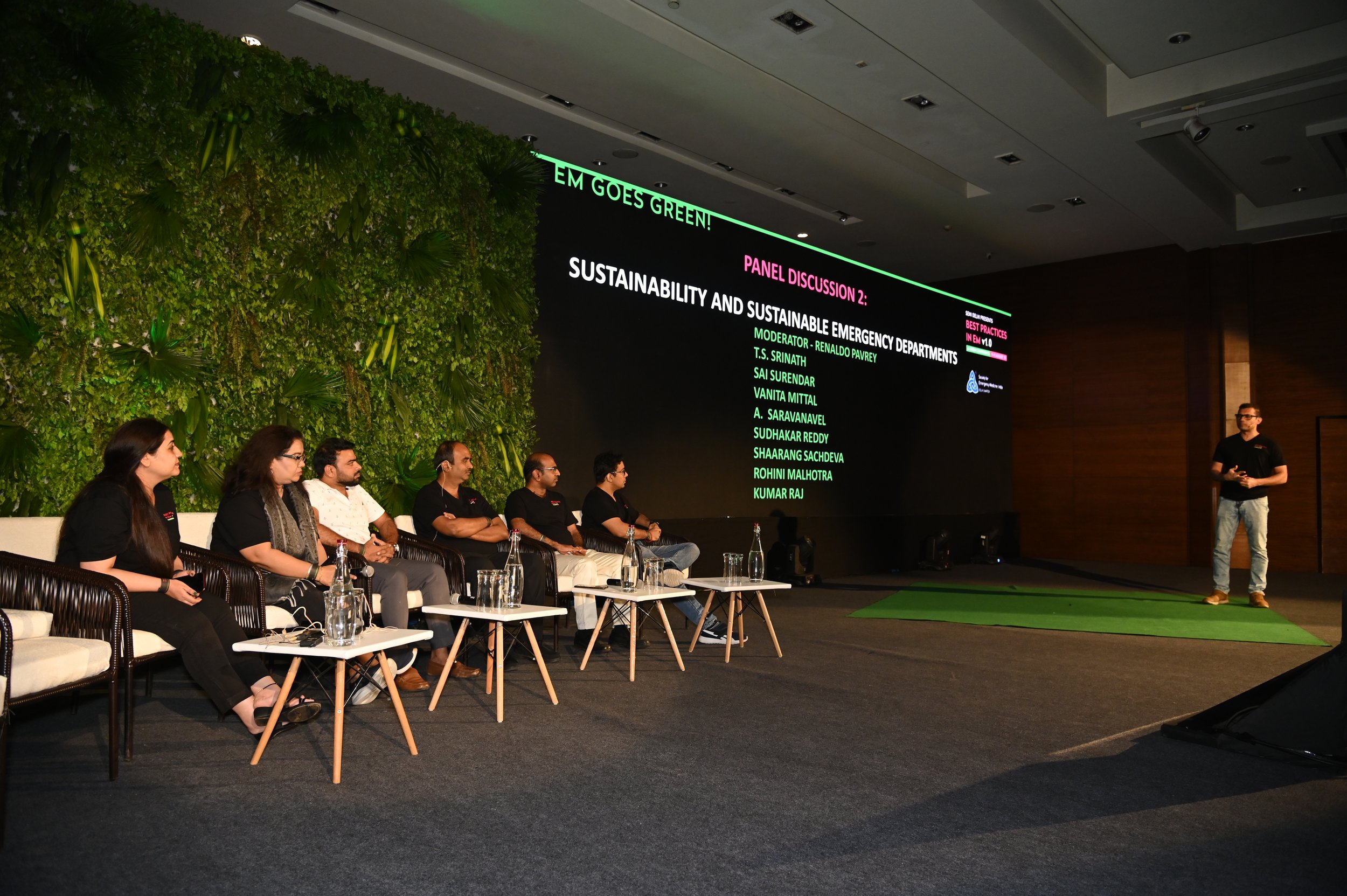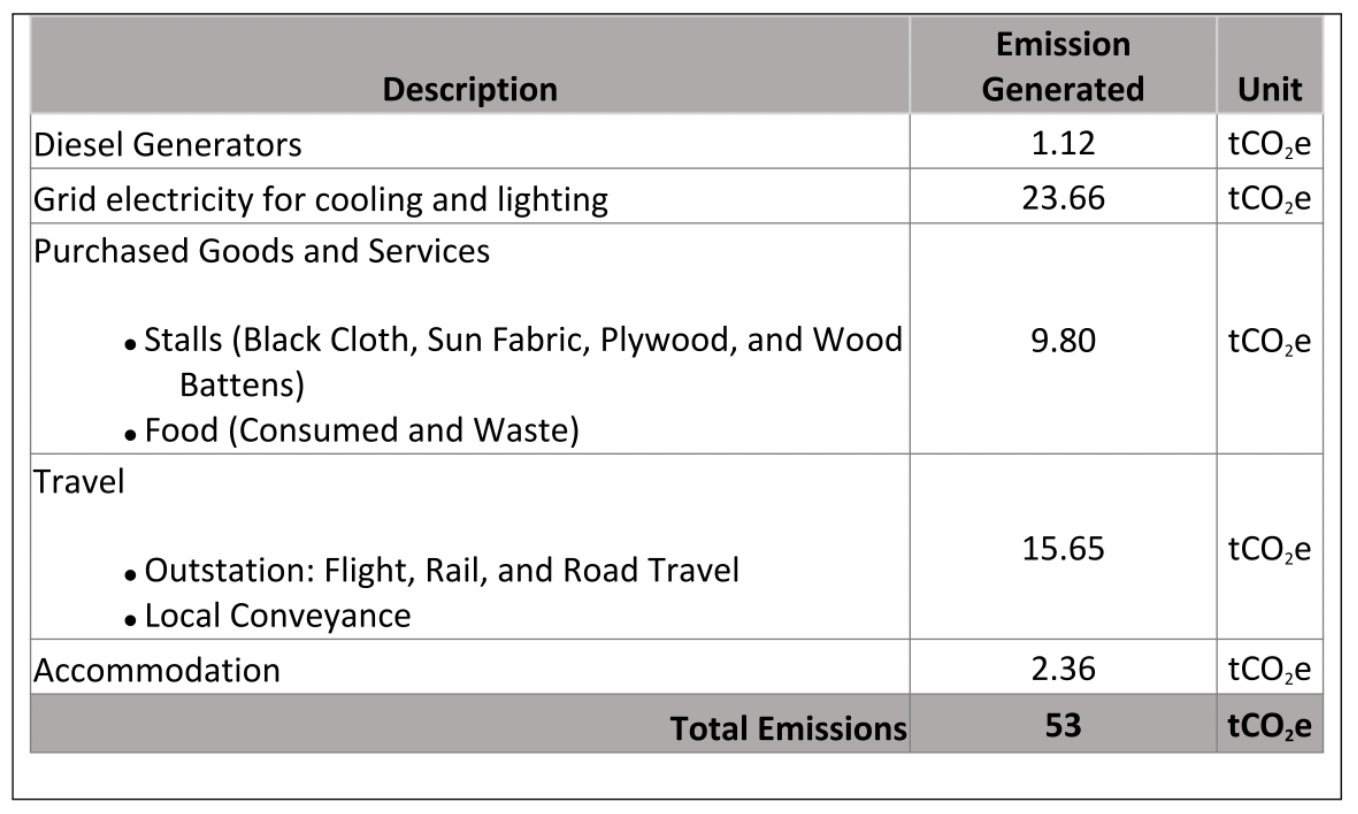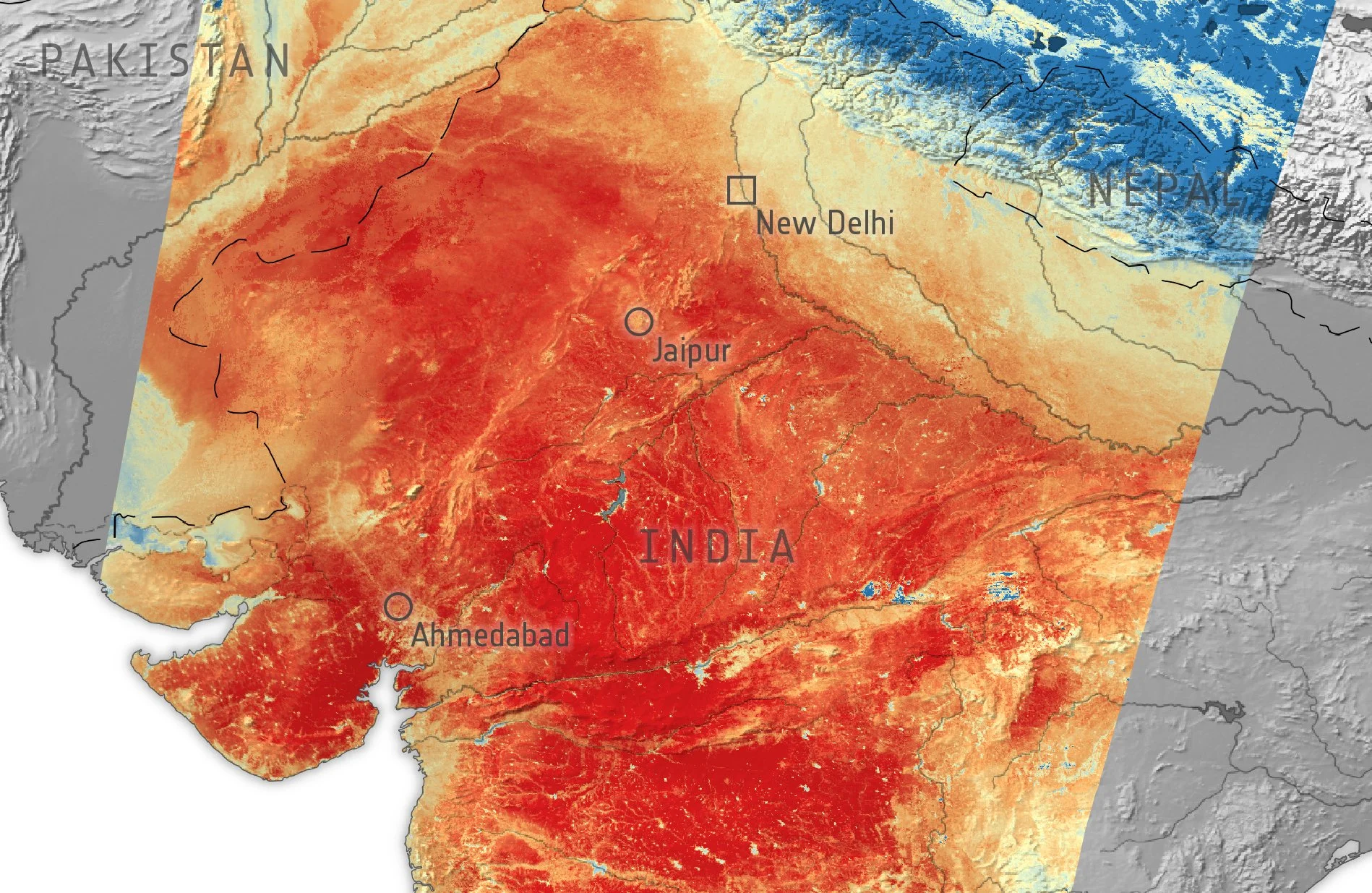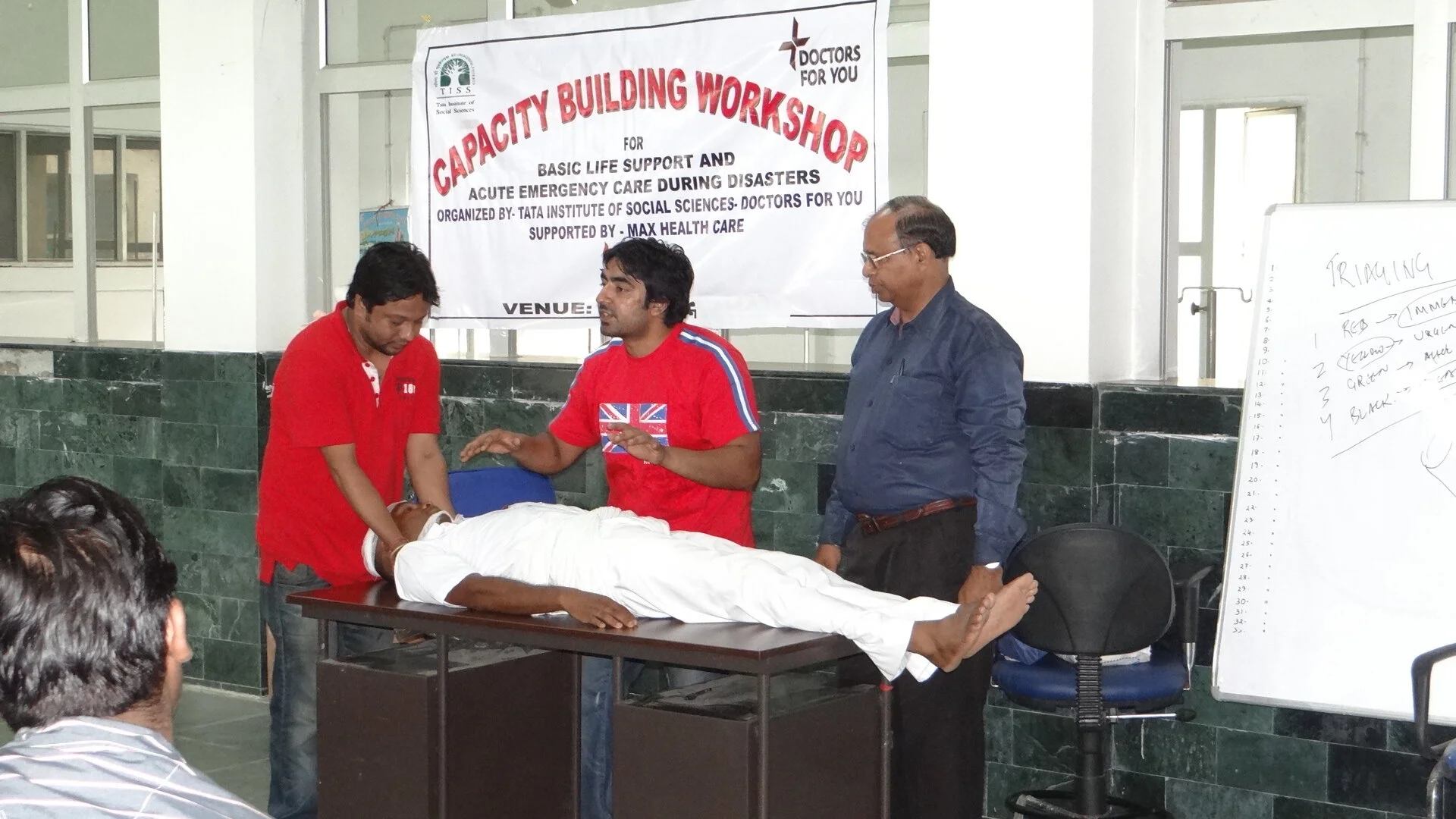Perspectives: Organizing the First Carbon Neutral EM Conference in India
Climate change is the “biggest global health threat of the 21st century” as declared in 2009.(1)
Healthcare’s climate footprint is equivalent to 4.4% of the global net emissions.(2) We know that if healthcare were a country, it would be the 5th largest contributor to global Greenhouse Gas (GHG) emissions. These emissions are contributed by purchased goods and services, capital goods, fuel and energy, business travels, waste treatment, pharmaceuticals, transport, metered dose inhalers, and pathological tests amongst others.(2,3) Medical conferences also play a major role in the contribution towards the carbon footprint of healthcare. With multiple delegates and faculties travelling from across the world to the hotel stays, one time use products, etc; medical conferences across all the specialties throughout the world have been producing major amounts of greenhouse gas emissions.(4-6) Our horizons were broadened when Dr Ankur visited to Melbourne in 2022 for the CODA conference. Their initiatives for reducing their footprint and focus on carbon neutrality was inspiring and the learnings invaluable.(7)
When our team from the Society for Emergency Medicine India (SEMI) – Delhi Chapter sat down to discuss organizing our conference, we had two foci – Not to be the usual evidence-based conference, and to bring down our carbon footprints and offset it to become carbon neutral. We wanted the faculties to showcase their own best practices that had been developed in their own departments. Be it clinical, administrative, research, communication or academic based.
We set out to make this a pilot project to pave the way for future sustainable healthcare conferences. We held a preconference dinner following which the conference was held on the 12th of August 2023. It was loaded with academics which included 19 talks and 2 panel discussions. The conference was attended by 150 delegates, 16 speakers, 6 SEMI office bearers and 4 volunteers. There were talks on Best Practices in setting up a simulation centre (Medhavi Skillsversity), Emergency Medicine (EM) nursing, running an Acute Care Unit, Artificial Intelligence enabled medical dispatch in Kerala, Climate smart Emergency departments in Delhi, Code sepsis, Manning of ICUs by EM physicians, etc. The panel discussions focussed on our two main points – What are Best Practices?; What is sustainability?
To aid in our vision of conducting a “Green” conference, we hired a sustainability consultant. He along with his team of volunteers guided us with our sustainable initiatives and calculated our footprint. We also hired a third party (Infinite Solutions, renowned climate change and Carbon consultancy from Noida - https://infisolutions.org/) to conduct an audit of the footprint calculated, provide us assurance reports and procure carbon credits from the United Nations Framework Convention on Climate Change (UNFCCC) to offset our emissions.
For our conference, the following were the initiatives taken to bring down our carbon footprint:
If travel by flight (economy class only).
Participants considered train travel if time permitted.
All pick and drops of speakers by electric vehicles.
No use of plastic or its products during the conference or dinner.
No PET bottled water and toiletries for guests residing at the hotel.
No processed foods/drinks (packaged in plastic) provided to guests residing in the hotel
Only reusable glass bottles used during the dinner and conference.
No one time use plastic/paper glasses for consumption of water
Reusable crockery for dinner/lunch/tea/coffee
Dark conference to reduce electricity consumption.
The gifts given to guests were made out of bamboo.
Minimize food waste.
Exhibition stalls were made out of reusable aluminium material.
No plastic was used in decorating the stage and other places.
No printed brochures/pamphlets/flyers allowed for the sponsor partners. Only electronic media
No Flex was used which is generally the norm
No Lanyards were used for delegates – Seed bands made of recycled paper were used for registration.
We did not limit our initiatives to the conference date only. As has become a norm in recent times all our artworks were designed in a digital format and circulated via emails, Whatsapp and other social media platforms. All certificates were provided in a PDF format to the speakers and delegates. We had sent out a survey to all delegates and speakers which was prepared by our third-party consultants. This survey included all travel, fuel and accommodation details of all the delegates and speakers.
We also chose a conference venue (The Crowne Plaza) that had its own green initiatives. They utilize solar power, have recycled water, have their own organic waste treated into manure and utilise energy saving LEDs across their campus.
The amount of carbon produced
After the audits, our carbon emission was calculated to be a total of 53 tCO2e. A concise description of the emissions produced has been mentioned in Table 1. The American Psychiatric Association conference held in San Francisco in 2019 produced 21,456 tCO2e.(8) Of course in comparison ours was a much smaller conference with fewer delegates. But this was a start.
The carbon footprint of our conference was offset by investing in carbon credits from 3 MW Wind Power Project - A project under the United Nations Framework Convention on Climate Change. This made our conference the first carbon neutral healthcare event in India.
Additional effort
In addition to the purchase of carbon credits, SEMI – Delhi would also be planting 1 tree sapling on behalf of each participant. The planting will be done in collaboration with the Environment Secretariat at Swadharma learning, Delhi Public School.
Conclusion
All living beings around the world share the bounty of the earth and all of them are responsible for maintaining conditions that support and promote life. Human beings share greater responsibility because they use a much larger part of the earth’s bounty in comparison to any other species.
No matter which of walk of life we are from each of us have to become responsible in our own ways if we are to protect the only life supporting planet in the universe known to us.
As emergency physicians, we are the master advocates for our patients. We need to lead a change. We need to advocate for the environment. Our experience during this conference is proof that we are committed to the cause and if we apply ourselves, we can work wonders for our only planet we call home. The experience and learnings from the Best Practices in EM v1.0 will be used in a larger conference next year (v2.0)
Ankur Verma – President, SEMI Delhi
Sanjay Jaiswal – Vice President, North Zone, SEMI National Board
Ashish Shah – Founder-Director, Wild Ecologues LLP
Acknowledgements
The whole Organizing committee – They know who they are
Method M Design – Our design consultant
Occasion Xperts – Our event managers
References
Costello A, Abbas M, Allen A, et al. Managing the health effects of climate change: Lancet and University College London Institute for Global Health Commission. Lancet 2009; 373: 1693–733
J Karliner, S Slotterback, R Boyd, B Ashby, K Steele, J Wang, Health care’s climate footprint: the health sector contribution and opportunities for action, European Journal of Public Health, Volume 30, Issue Supplement_5, September 2020
McAlister S, Barratt AL, Bell KJ, McGain F. The carbon footprint of pathology testing. Med J Aust. 2020 May;212(8):377-382. doi: 10.5694/mja2.50583. Epub 2020 Apr 18. PMID: 32304240.
Zotova O, Pétrin-Desrosiers C, Gopfert A, Van Hove M. Carbon-neutral medical conferences should be the norm. Lancet Planet Health. 2020 Feb;4(2):e48-e50. doi: 10.1016/S2542-5196(20)30003-6. Epub 2020 Feb 26. PMID: 32112744.
Atmosfair. The Annual Climate Budget. 2019, https://www.atmosfair.de/ en/green_travel/annual_climate_budget/
Lenzen M, Sun Y-Y, Faturay F, Ting Y-P, Geschke A, Malik A. The carbon footprint of global tourism. Nat Clim Chang 2018; 8: 522–28
Wortzel JR, Stashevsky A, Wortzel JD, Mark B, Lewis J, Haase E. Estimation of the Carbon Footprint Associated With Attendees of the American Psychiatric Association Annual Meeting. JAMA Netw Open. 2021 Jan 4;4(1):e2035641.



